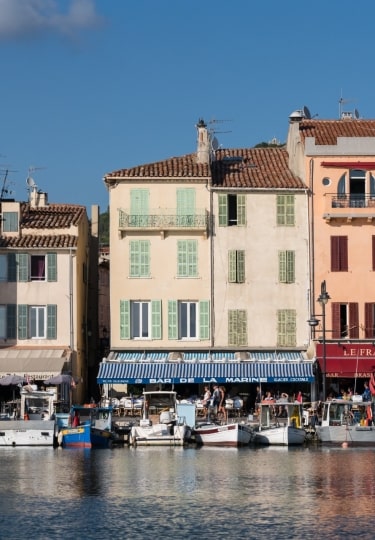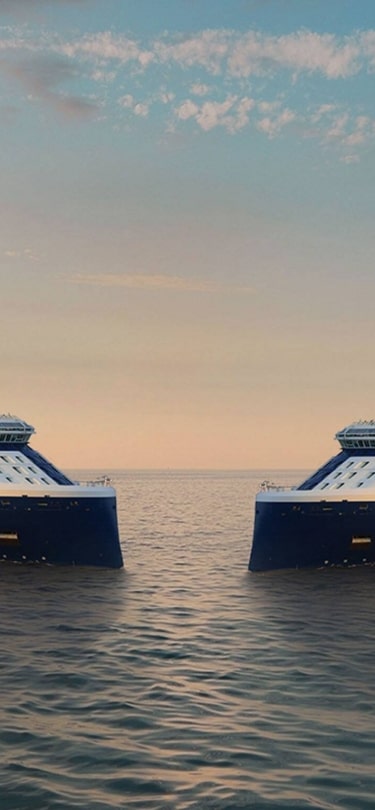The answer to the question, “What is Marseille known for?” could be anything from a national anthem to an ancient Greek necropolis.
Founded in 600 BC, ancient Marseille, one of the major ports of the Mediterranean, is a place with a fascinating and complex cultural weave. As France’s second city and the people to which its national anthem “The Marseillaise” is dedicated, it holds a significant place in the country’s consciousness.
What is Marseille famous for today? Its regenerated historic heart, world-class MuCEM museum, and the beguiling topography of its Calanques National Park, for a start. This once-gritty port city is now an intriguing center of culture, culinary adventure, and close by, beautiful beaches.
Notre Dame de La Garde Basilica
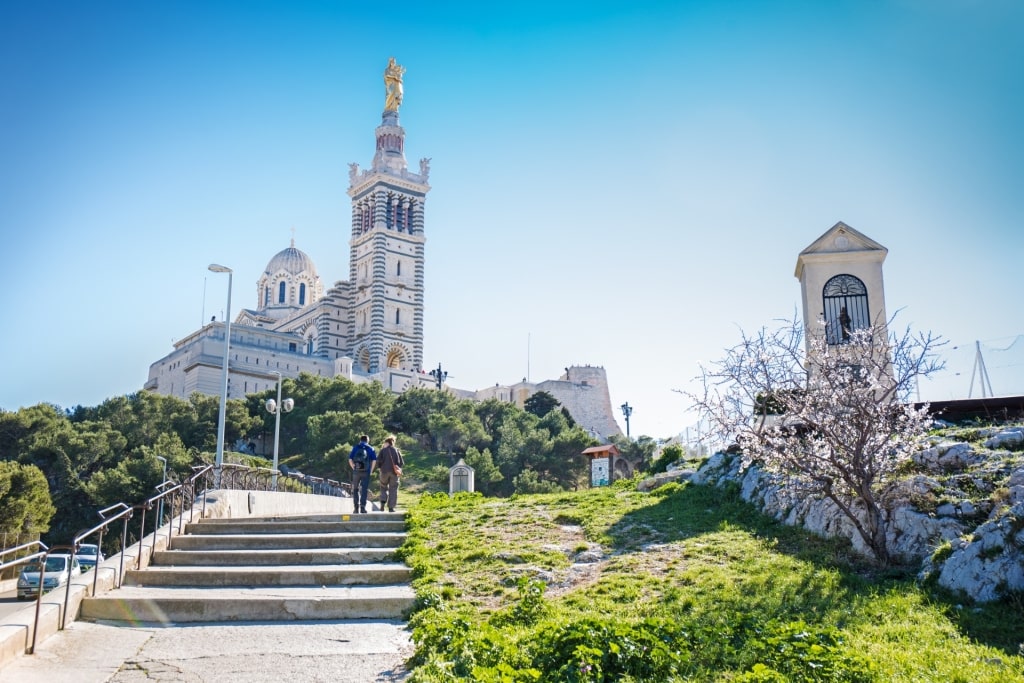
Notre Dame de La Garde Basilica
A city’s skyline is often instantly recognizable, but what is Marseille known for? Find a panoramic image of the city and your eye will likely be drawn to the towering gilt statue of Mary perched atop a marble-striped, layer cake of a basilica. This is the Notre Dame de la Garde Basilica, its foundations fused with the remains of a 16th-century fort.
The city’s highest point, the statue of “the Good Mother” is sacred to the Marseillais. And not only as a Christian symbol; the basilica has acted as a kind of spiritual lighthouse, beaming out protective vibes for its fishermen since its completion in the mid-19th century.
Step inside, away from the glittering sea view, and you’ll find that the Romano-Byzantine interior is almost as dazzling—an exquisite confection of gilt mosaics and striped marble.
Vieux Port
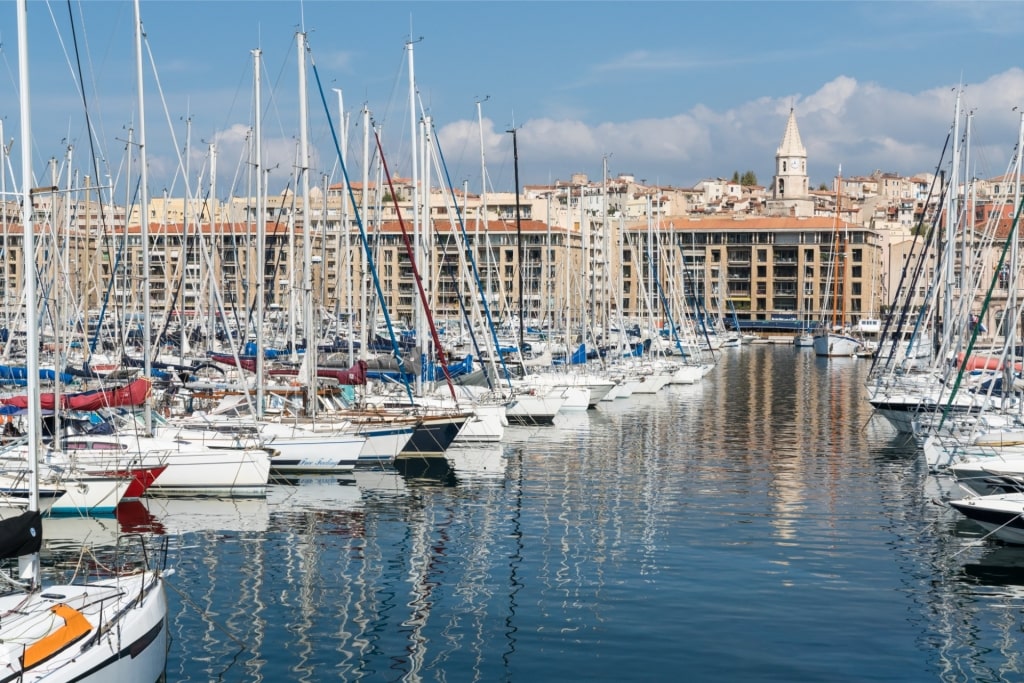
Vieux Port
The city’s ancient heart, the Vieux Port, or “Old Harbor”, is the central point of Marseille that visitors find themselves returning to again and again. There’s history everywhere you look.
Modern sculptures like Norman Foster’s Vieux Port Pavilion stand in the same elongated amphitheater as baroque buildings such as the 17th century Hôtel de Ville.
Look seawards and there are the fortresses of Saint-Nicholas and Saint-Jean, their sentinel gaze overlooking a watery passage through which the sails of crusader ships slipped past, bound for the Holy Land.
While today it’s morphed into a dock for expensive yachts, there remain elements of its commercial maritime past. The catch of the day is sold from plastic tables on the Quai des Belges, while oak-clad bars like La Caravelle, above the harborside Bellevue Hotel, with its model galleons and a sizeable rum selection, conjure up the port’s saltier past.
Bouillabaisse
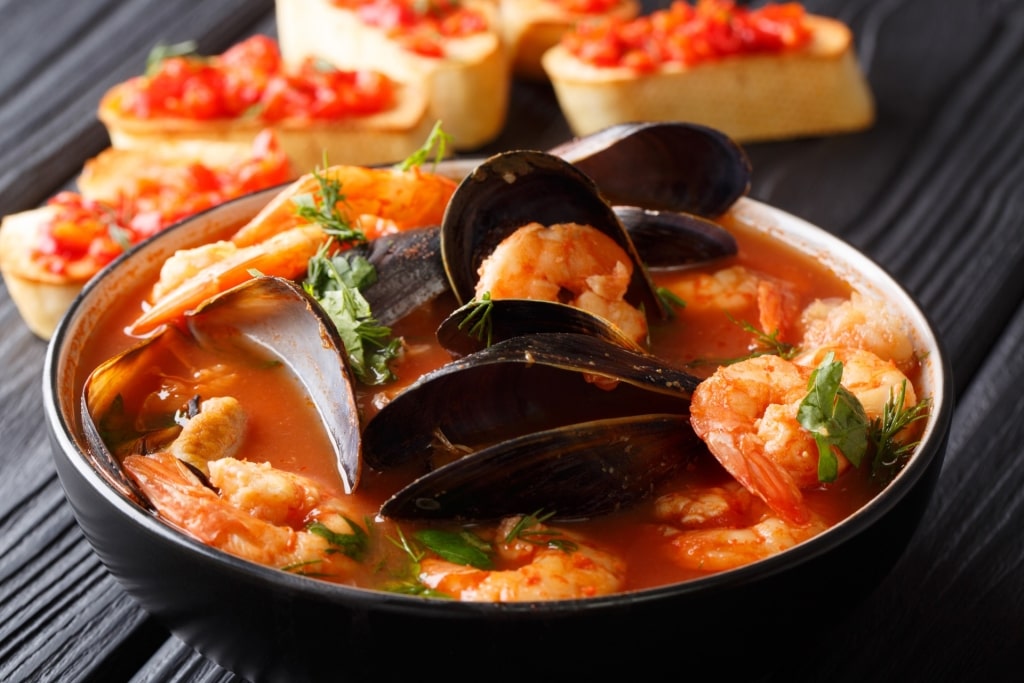
Bouillabaisse
What is Marseille known for? In the context of French food culture, it has to be bouillabaisse. A filling fish soup with a delicious depth of flavor, bouillabaisse has its origins in the cuisine of the city’s ancient Greek founders.
Typically served for between four and six diners, traditional bouillabaisse is a dish of multiple parts. There’s the savory, saffron broth accompanied by slices of toasted baguette, topped with a spicy mayonnaise or “rouille.” These bready rounds are often floated on the broth like little dinghies.
The other major component is the fish. Bouillabaisse evolved to become a way for fishermen to offload some of the less popular fish, so you’ll usually be served a selection that includes conger eel, gurnard, and scorpionfish. For one of the city’s top-tier bouillabaisses, head to Michelin-starred Gérald Passédat’s Le Petit Nice.
MuCEM
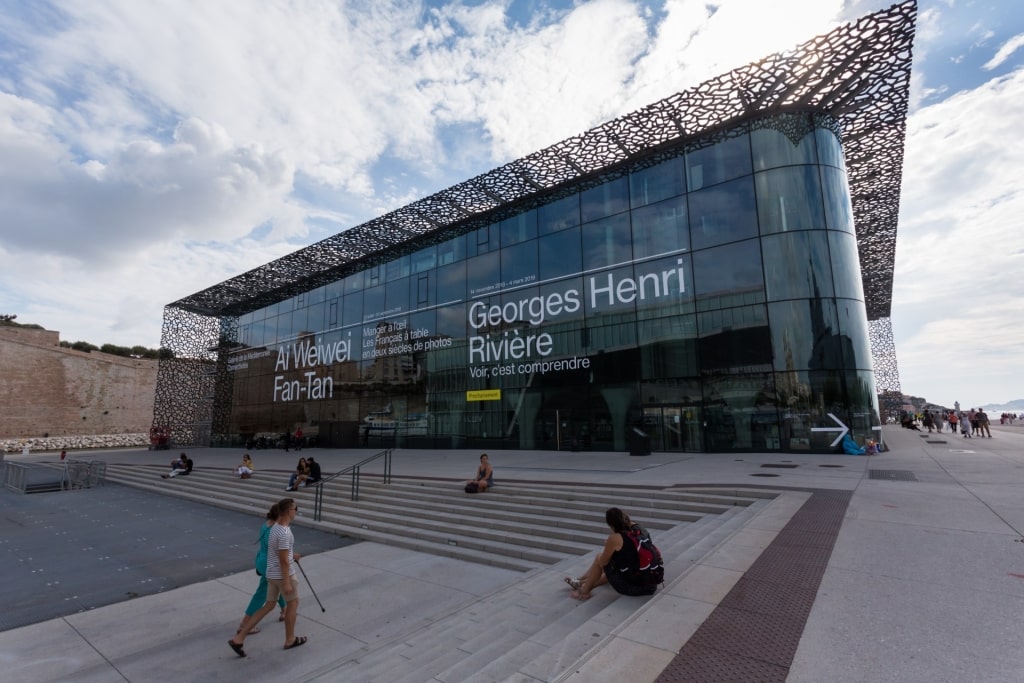
Museum of the Civilizations of Europe and the Mediterranean
The Museum of the Civilizations of Europe and the Mediterranean (MuCEM) is one of the more recent major additions to France’s second city. Completed in 2013, it’s a hugely engaging museum with a vast remit.
It’s also an architecturally striking edifice—MuCEM’s exterior metal webbing is intended to resemble a fishing net. Within, you’ll find exhibitions engaged with the history and cultures that have influenced the development of the Mediterranean region.
Once you’ve worked up an appetite, head to the top floor for a seat with a view at the Le Môle Passedat restaurant.
Le Panier
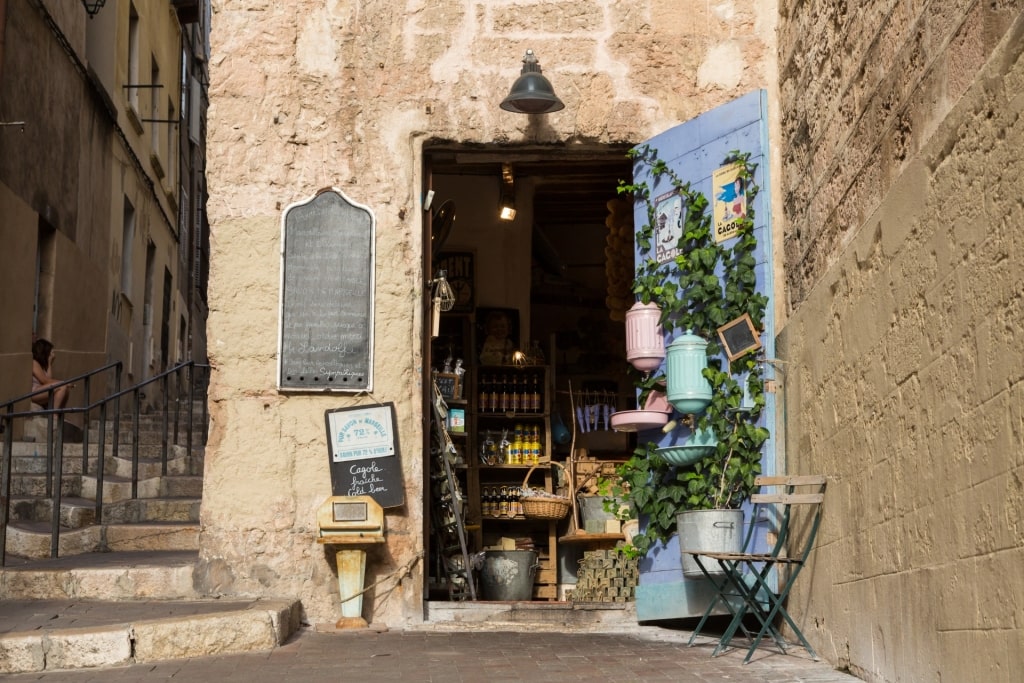
Le Panier
Perhaps Marseille’s most atmospheric quarter, Le Panier is located just off of the Vieux Port. A maze of limestone staircases, niche boutiques, and playful street art, this area makes for a wonderful afternoon’s excursion.
While it’s become somewhat gentrified today, Le Panier has a history as one of the poorest districts in the city. Its tiny homes used to belong to the families of fishermen and immigrants.
During darker times, the Corsican Mafia operated out of Le Panier, and the neighborhood acted as a sanctuary for Jews fleeing Hitler’s Germany.
Enfolded within its capillary streets is La Vieille Charité, an elegant former almshouse transformed into an archaeology museum as well as a contemporary art gallery.
Château d’If
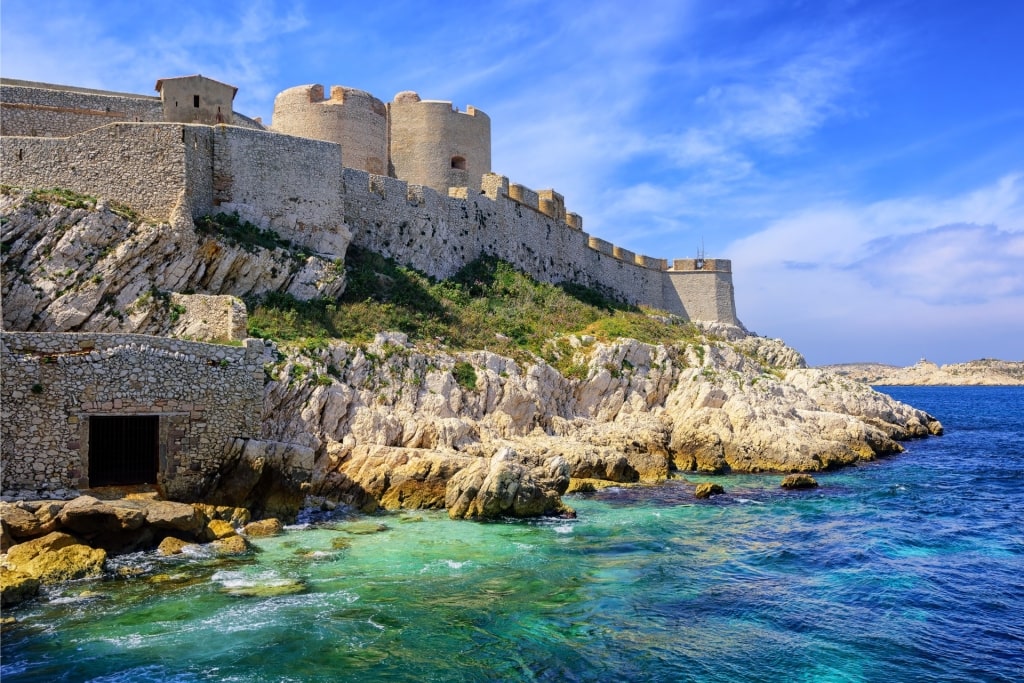
Château d’If
If you’re considering what Marseille is known for from a literary perspective, Château d’If would likely come high on the list.
Immortalized as the grim prison in the novel “The Count of Monte Cristo”, Château d’If is visible from Marseille as a castle squatting on a small, fortified island that’s encircled by the azure waters of the bay.
Open for brutal business since 1531, this “Monument Historique” was originally designed as a way to secure the southern coastline from seaborne invaders. It morphed into a prison that was famously difficult to escape from, except for one Edmond Dantes. Discover its cells and stories on a guided tour.
Cathédrale La Major
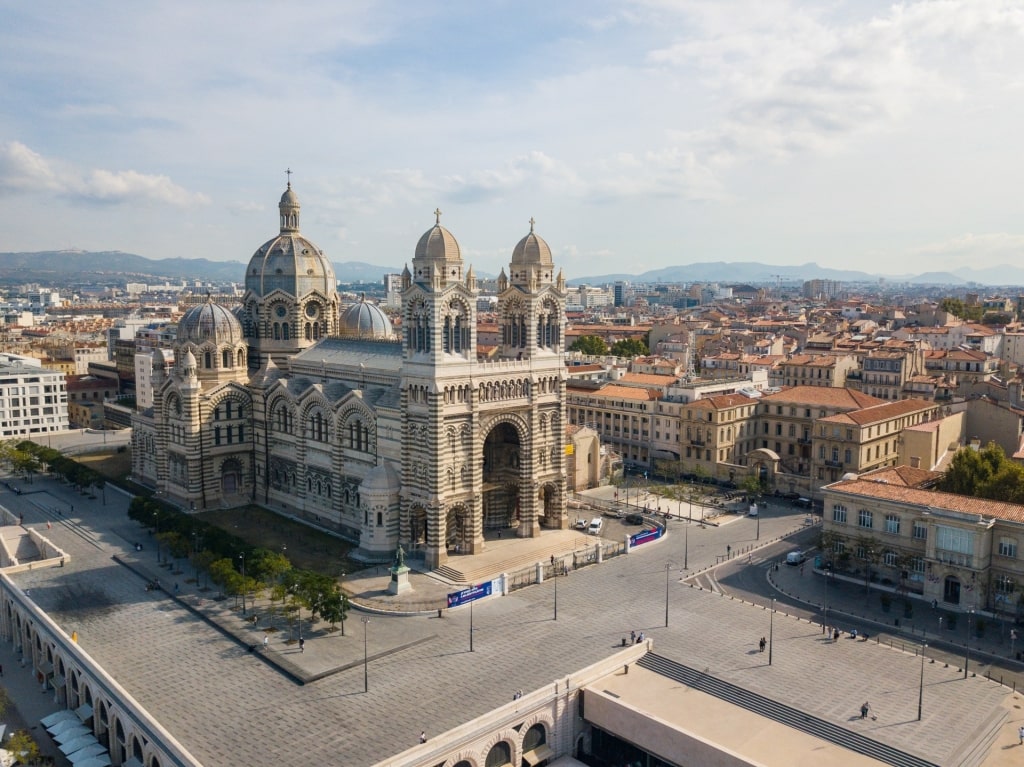
Cathédrale La Major
Marseille Cathedral is one of France’s largest and most striking places of Christian worship. Situated on the waterfront, it’s visible to the incoming ferries or those finishing off their lunches at MuCEM’s rooftop restaurant.
As with many of the major landmarks of Marseille, the architecture of the cathedral, officially the “Cathedral of Sainte-Marie-Majeure”, is rife with symbolism. The building’s blend of Oriental and Roman design signals Marseille’s historic significance as the “Gateway to the East”. The beautifully striped exterior layers Florentine marble and regional Cassis stone.
With dimensions on a par with Rome’s St Peter’s Basilica, this vast place of worship is capable of seating up to 3,000. Its attached warehouses, which used to be filled with sacks of grain and barrels of beer waiting to be loaded onto ships, today houses a selection of trendy restaurants and bars.
Calanques National Park
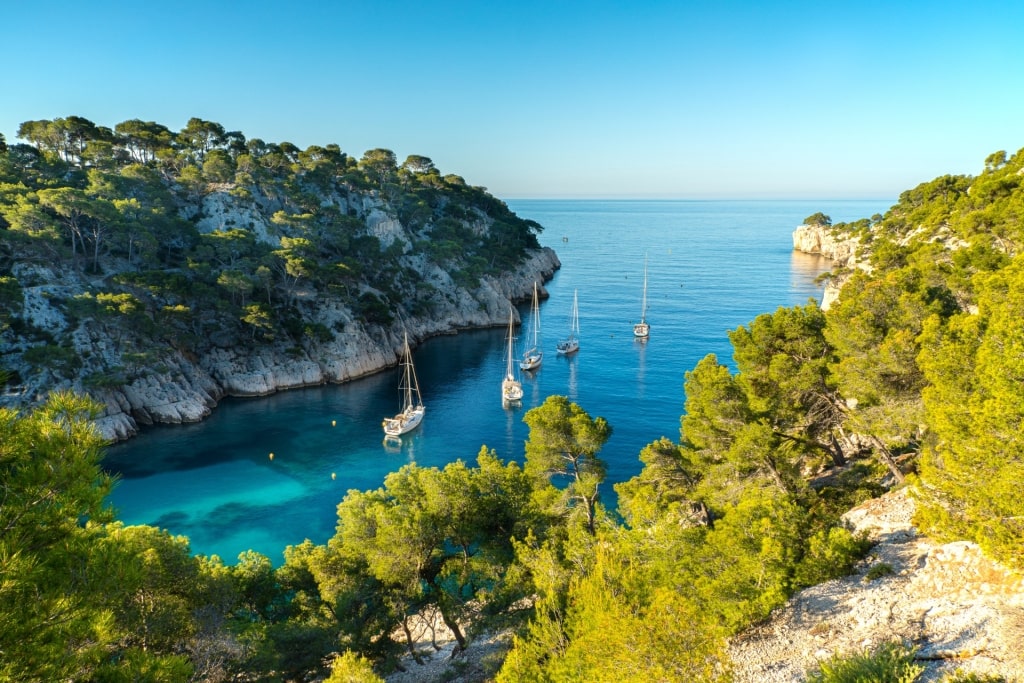
Calanques National Park
For the Marseillais, one of their best options for a summer day trip is a visit to the Calanques National Park. About half an hour’s drive south of the city, in the direction of the popular fishing village of Cassis, the park offers gorgeous high-walled limestone inlets – the Calanques or “creeks” – that are washed by peaceful turquoise waters.
It’s possible to hike or cycle your way to the Calanques’ picturesque beaches and fingers of tranquil water. During summer in France, advice on hiking in the park changes, as the authorities attempt to manage numbers and the risk of fire.
Therefore, during high season, it can be best to arrive by boat; scenic tours can be arranged from Marseille or Cassis. The views of the Calanque d’En Vau or the equally spectacular Calanque du Sugiton are some you won’t forget.
Vallon des Auffes
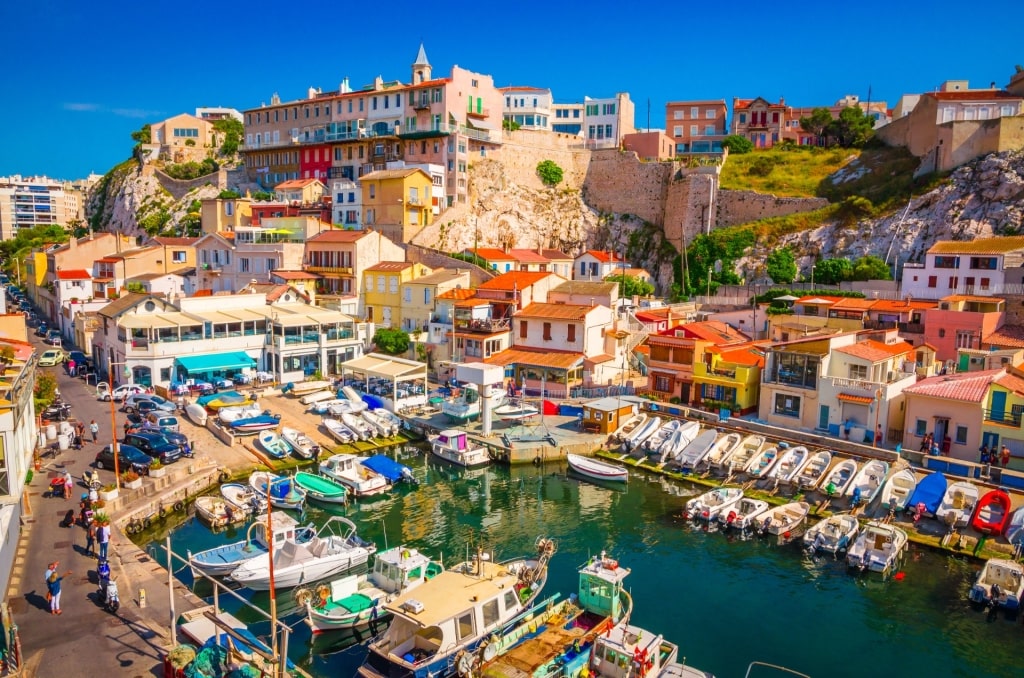
Vallon des Auffes
A fishing village that has been absorbed into Marseille over the years, Vallon des Auffes has become one of the most charming areas of the city.
Tucked in behind the Corniche Kennedy coastal road, it’s found a half-hour’s walk or a ten-minute drive from the Vieux Port. There’s a small beach, lined with traditional pointu boats as well as dinghies. It’s overlooked by cocktail bars and restaurants, including Chez Fonfon, known for its bouillabaisse.
In the summer, when the Vallon des Auffes is bathed in the sunset’s ochre glow, it’s one of Marseille’s best spots for an aperitif.
La Corniche Kennedy
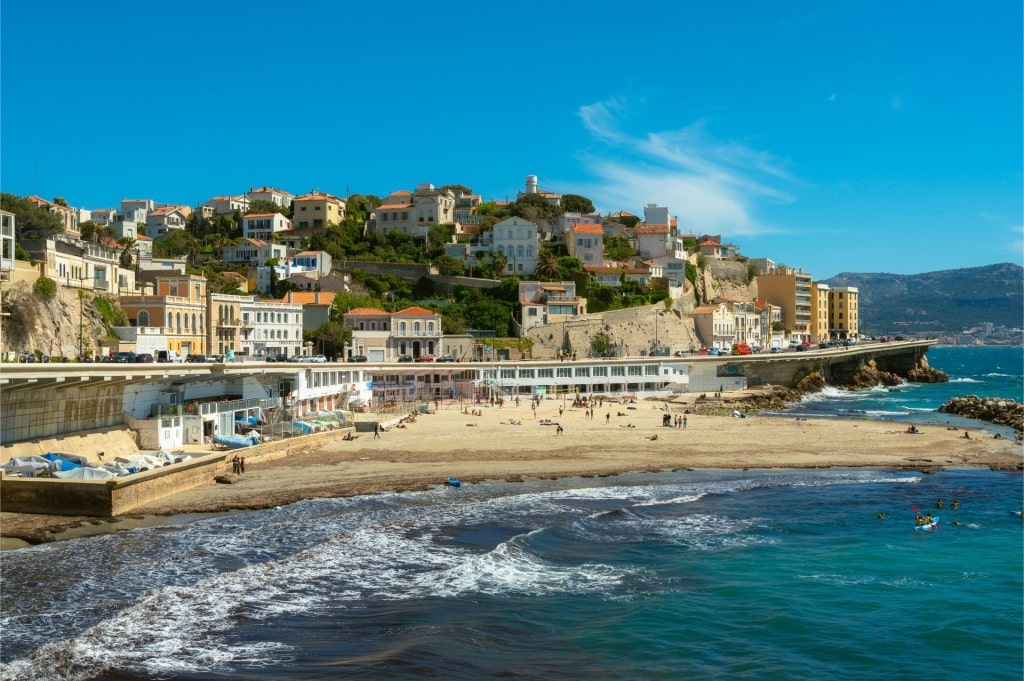
La Corniche Kennedy
The name of Marseille’s coastal drive, La Corniche Kennedy, is a tribute to President John F Kennedy.
South of the Vieux Port, La Corniche wraps itself around the waterfront, a drive that slowly unwinds a panorama of the Vallon des Auffes and the offshore islands in the bay, including Château d’If.
If you’re in Marseille on certain Sundays, the Corniche is car-free and perfect for a cycle ride or a walk. If you’re not, there’s a permanently open bicycle path that follows some of its route.
Parc Borély
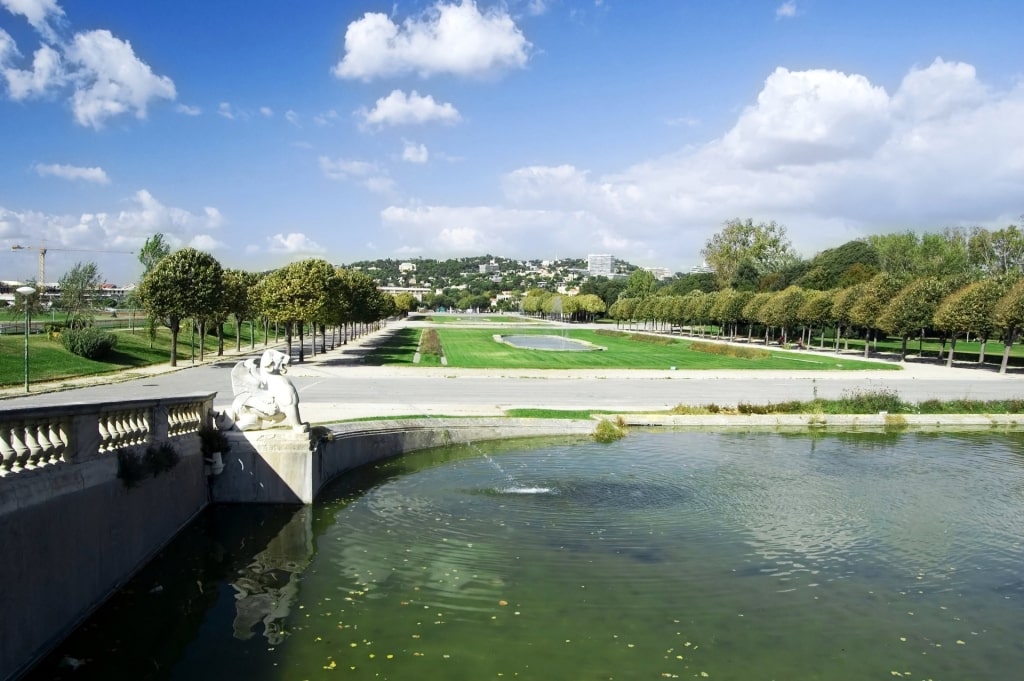
Parc Borély
One of Marseille’s loveliest parks, Parc Borély is found south of the city center. Acting as a grassy, fountain-plumed hinterland to the popular Plages du Prado, Parc Borély offers over 40 acres of space for picnics, strolls, and frond appreciation. Catching the eye at one end is a broad-chested chateau.
The park is separated into various areas, such as Chinese and English formal-style gardens. The scents from the rose garden mingle with the coastal breeze. There’s even a nine-hole golf course, tucked inside a disused racetrack, and a miniature, leafy Notre Dame de la Garde.
Prado Beaches
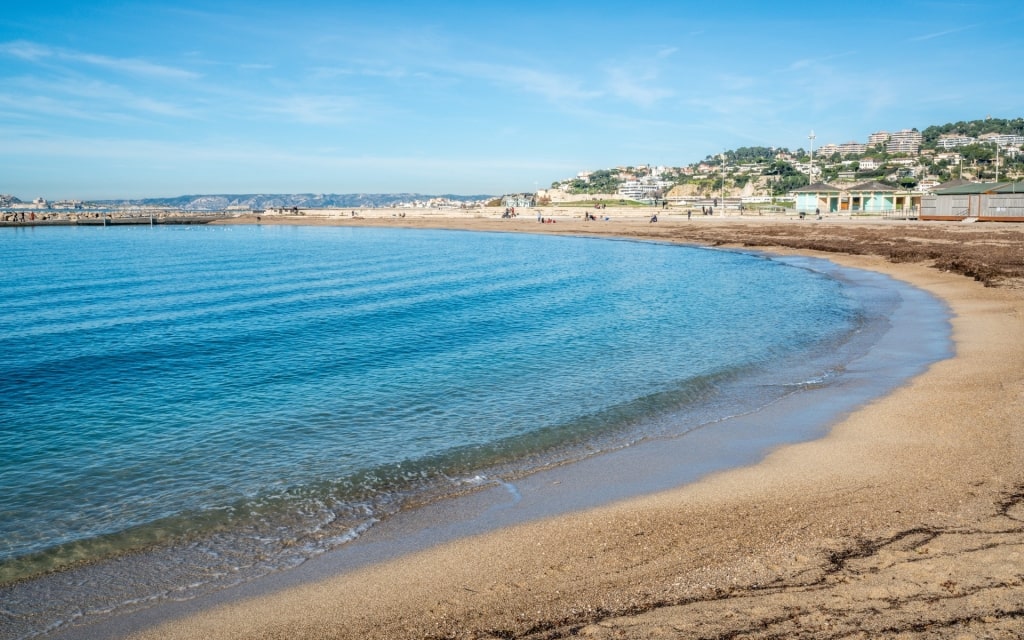
Plages du Prado
The largest of Marseille’s city beaches, the Plages du Prado was developed in the 1970s. To reclaim land from the sea, the city used rubble that was left over from the tunneling of the city’s metro system. The city imported sand to dress these artificial beaches and ever since they’ve been a major focus for city life.
In the summer, central-dwelling locals pile into buses with their beach bags for the 20-minute ride to the Prado Beaches. Covering just over two miles, this seaside park is the site of al fresco music concerts, beach soccer, and basking bodies.
The vibe shifts between various beach areas—Borély is more family-friendly, while Huveaune is the quietest—so figure out which works best for you, slap on the sunblock, and run to catch that bus.
Longchamp Palace
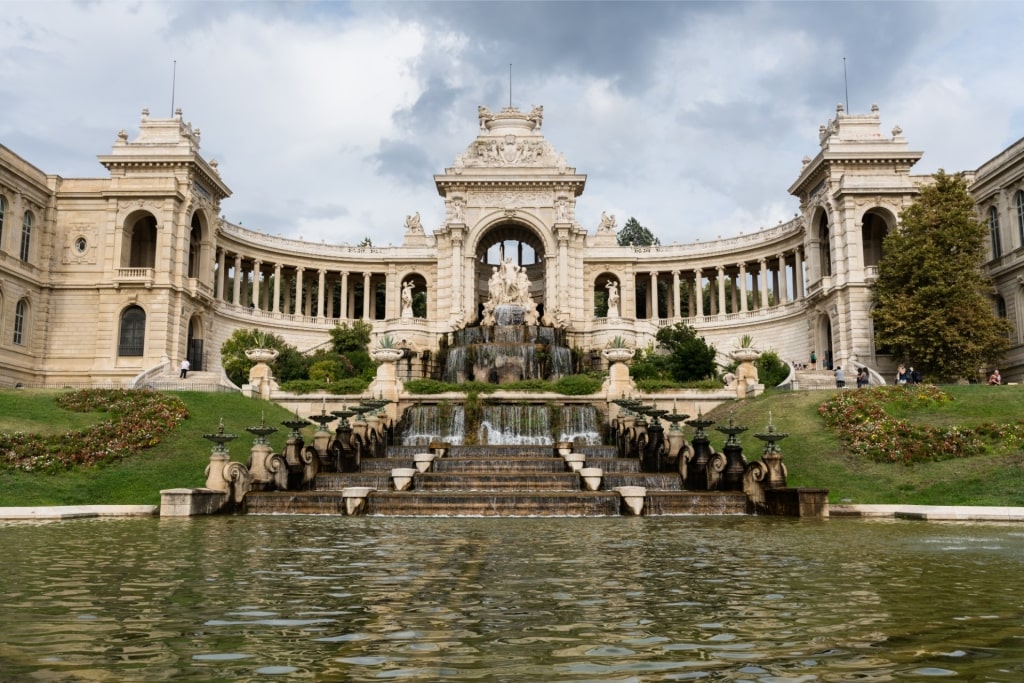
Longchamp Palace
Longchamp Palace, or the Palais de Longchamp, was built to celebrate the creation of a clean water supply to Marseille, following the completion of the Canal de Marseille.
Even if you didn’t know the history, you’d probably assume water was a theme upon seeing the palace’s grand fountain or “water castle.” It’s the most eye-catching element of what is one of the best-known gardens in France. Within its notable grounds, you’ll also find the atmospheric remains of a 19th-century zoo.
Inside the main building, you’ll find the Musée des Beaux-Arts de Marseille. The city’s oldest art gallery has a superb post-renaissance collection. Meanwhile, in the west wing, you can see the absorbing exhibits of the Natural History Museum.
Saint-Victor Abbey
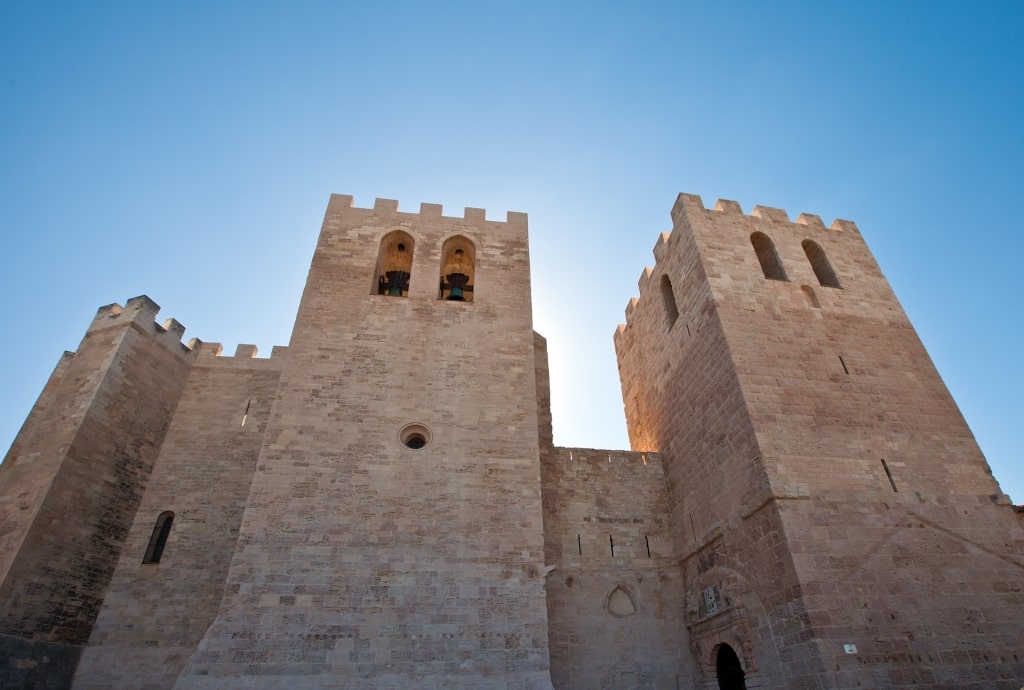
Saint-Victor Abbey
One of the best things to do in Marseille is to visit the Saint-Victor Abbey, which is perhaps the city’s most ancient site. Entering the fifth-century fort-like construction of this working Catholic church, with its high unadorned walls and slits for windows, it certainly feels designed for another, darker age.
Set on a rise on one side of the Vieux Port, the abbey is named for Victor, a Christian martyr. His remains are believed to be laid beneath the abbey in a space that was once a quarry used by the ancient Greeks to construct the original port. This quarry eventually became a necropolis—a place in which to inter the dead outside of the city walls.
La Cité Radieuse
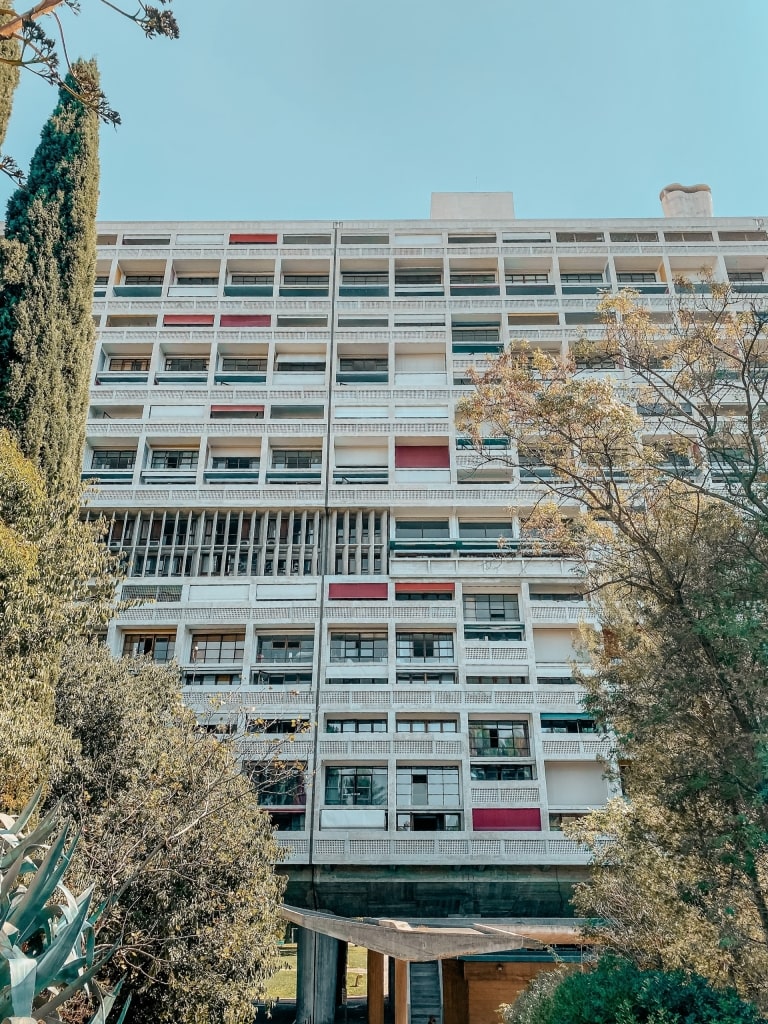
La Cité Radieuse
With superstar fortresses and lavish palais to catch the eye, La Cité Radieuse is not the best known of all the things Marseille is famed for, but it’s certainly a highlight for fans of modern architecture.
A pioneering tower block, this 18-story residential building in Marseille’s 8th arrondissement was a flag bearer for Brutalist architecture. Designed by the Swiss architect Le Corbusier, the building was the first of five Unité d’Habitation buildings to be built.
With a focus on communal living, the Unité d’Habitation concept was of a vertically layered neighborhood. Its inhabitants share a rooftop terrace and two streets with conveniences including a tea room, design shops, and even a three-star hotel.
Today this trendy address is a UNESCO World Heritage Site. Guided tours can take you inside to discover its interior streets as well as a show apartment.
Pastis

Pastis
Pastis is an anise-flavored aperitif that’s hugely popular across France, particularly so in its southern half. Marseille has long been one of the spiritual homes of pastis, which was created in Provence. This is due to Paul Ricard, an industrious Marseillais who transformed this rustic tipple into a commercial success.
Pastis is produced from a blend of fennel, dried licorice root, and star anise. Diluted with water, it’s a cloudy glassful that has a delicious cooling effect. It’s the perfect refreshment after another warm, sunny day—another thing that Marseille is famous for.
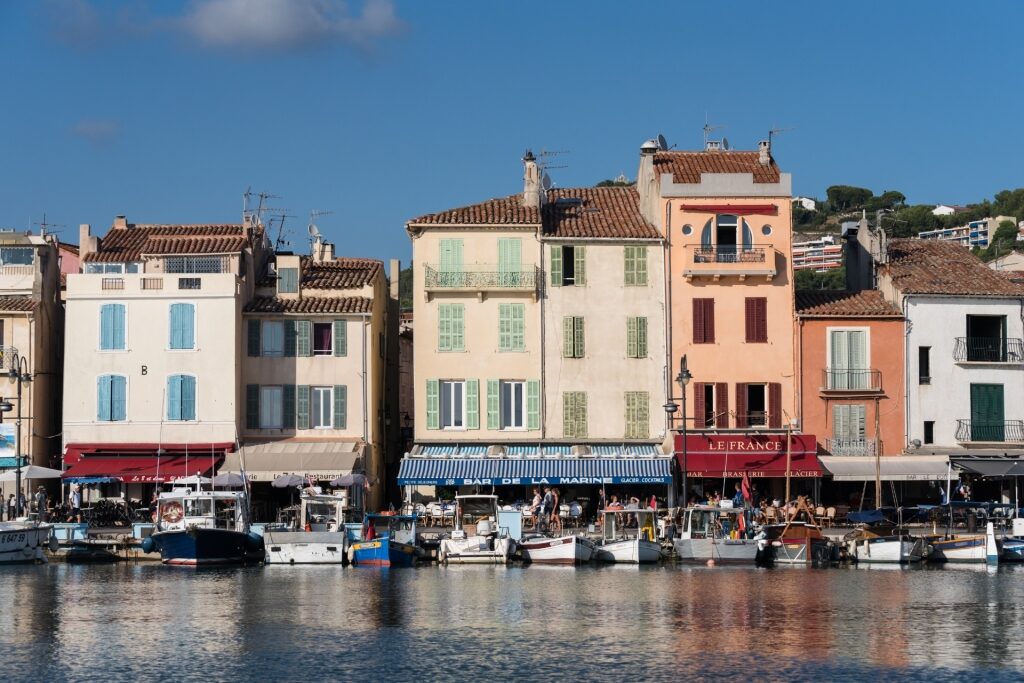
Marseille
Discover all of Marseille’s treasures and more on one of Celebrity’s cruises to Marseille. Browse cruise itineraries online and start planning your next unforgettable vacation.
